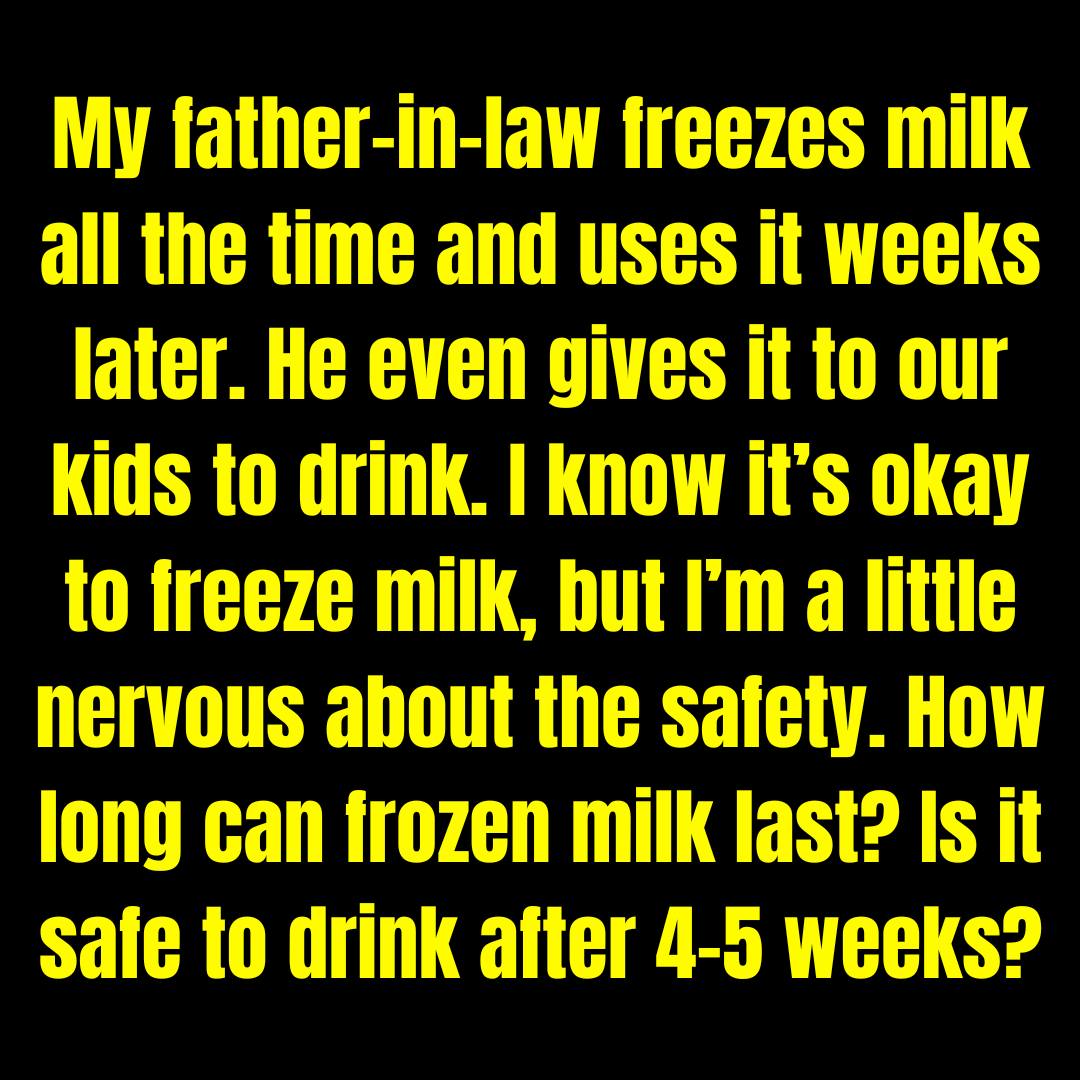I’ve always felt like my family has a knack for making it nearly impossible to predict how much milk we’ll go through in a week. Some weeks I buy what seems like a reasonable amount, and it’s gone within two days as if we’ve been secretly running a dairy café out of our kitchen. Other weeks I try to plan ahead and buy more, only to watch it sit untouched in the fridge until the expiration date creeps up and I’m reluctantly pouring it down the drain.

It always felt like a losing battle—until I learned something I wish I had known years ago: you can actually freeze milk. That’s right—milk, the everyday staple I’ve been wasting for years, can be frozen and safely stored for future use. It turns out the process is not only easy but also incredibly practical for anyone who struggles with the same unpredictable consumption patterns. The key to freezing milk successfully is understanding how it behaves once it’s in the freezer. If your milk comes in those plastic gallon jugs, there’s one very important step you need to take first: pour out about one cup of milk before freezing it. Milk expands when it freezes, and if you don’t leave enough room in the container, you could end up with a cracked jug or a messy, frozen explosion coating everything in your freezer.
This step is simple but essential. Once you’ve left room for expansion, you have options for how to freeze it. You can put the whole jug straight into the freezer if you know you’ll be using a large quantity later, or you can portion the milk into ice cube trays if you plan on using smaller amounts for cooking, baking, or even adding to coffee. The cube method is especially handy if you just need a splash here and there, as it saves you from having to thaw an entire gallon when you only need a few tablespoons. It’s important to note that you should only freeze milk that’s stored in plastic containers.
Glass may seem like a good option, but it’s risky because glass can crack or shatter when exposed to extreme temperature changes, and no one wants to deal with a milk-and-glass cleanup disaster in their freezer. As for how long frozen milk lasts, you can safely keep it in the freezer for up to three months. This gives you plenty of flexibility—whether you’re stocking up during a sale, prepping for a busy month, or simply avoiding waste when your family’s milk habits are unpredictable. When it’s time to thaw your milk, the safest method is to let it defrost slowly in the refrigerator for about 24 hours.
This keeps it at a safe temperature and prevents bacterial growth. If you’re short on time, you can speed things up by placing the container in a sink or large bowl filled with cold water, which should have it thawed in roughly 30 minutes. Once thawed, give the milk a good shake before using it, as freezing can cause the fat to separate slightly. The flavor and texture might be just a touch different from fresh milk—slightly grainier in some cases—but it’s still perfectly fine for drinking, cooking, or baking. Learning this simple trick has been a game-changer for my household.
No more rushing to the grocery store midweek because we unexpectedly ran out, and no more guilt over wasting money and food by tossing expired milk. This little hack has also opened up possibilities I hadn’t considered before. If milk is on sale, I can stock up without fear it’ll spoil before we use it. If we’re going away on vacation, I can freeze what’s left instead of pouring it out. And those milk ice cubes? They’ve become my go-to for coffee, smoothies, or recipes that call for just a small amount. It’s the kind of small, practical discovery that makes you wonder why you never thought of it before.
For families like mine, where cereal consumption swings wildly from “barely touched” to “three boxes in two days,” having frozen milk on hand is like having a safety net. It means I’m prepared for the unpredictable, and I can finally stop playing the guessing game with expiration dates. The more I use this method, the more I realize how much easier it makes meal planning and grocery shopping. So if you’ve ever found yourself pouring sour milk down the drain or making a last-minute store run just to grab a gallon, freezing milk might be the solution you didn’t know you needed. It’s simple, it works, and it’s saved me more time and money than I can count—and now I just have to figure out how to keep up with the cereal.





